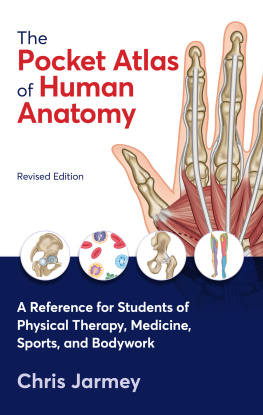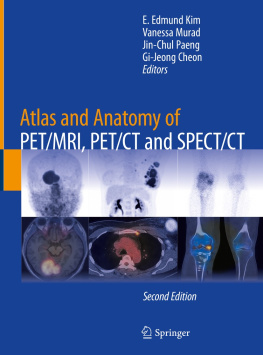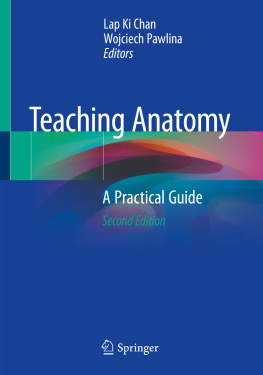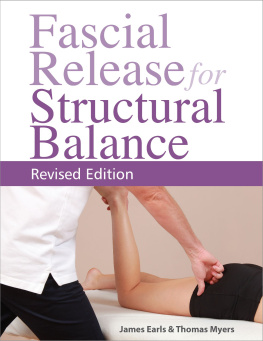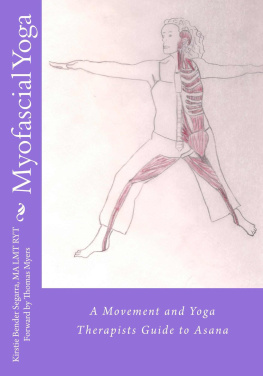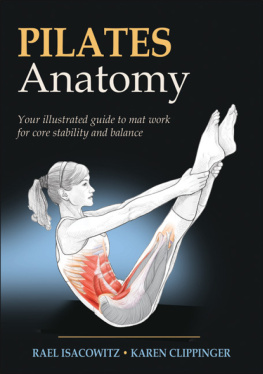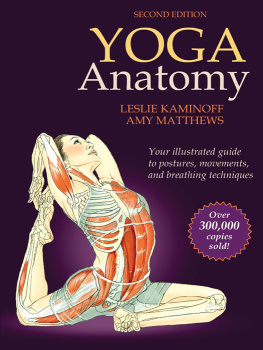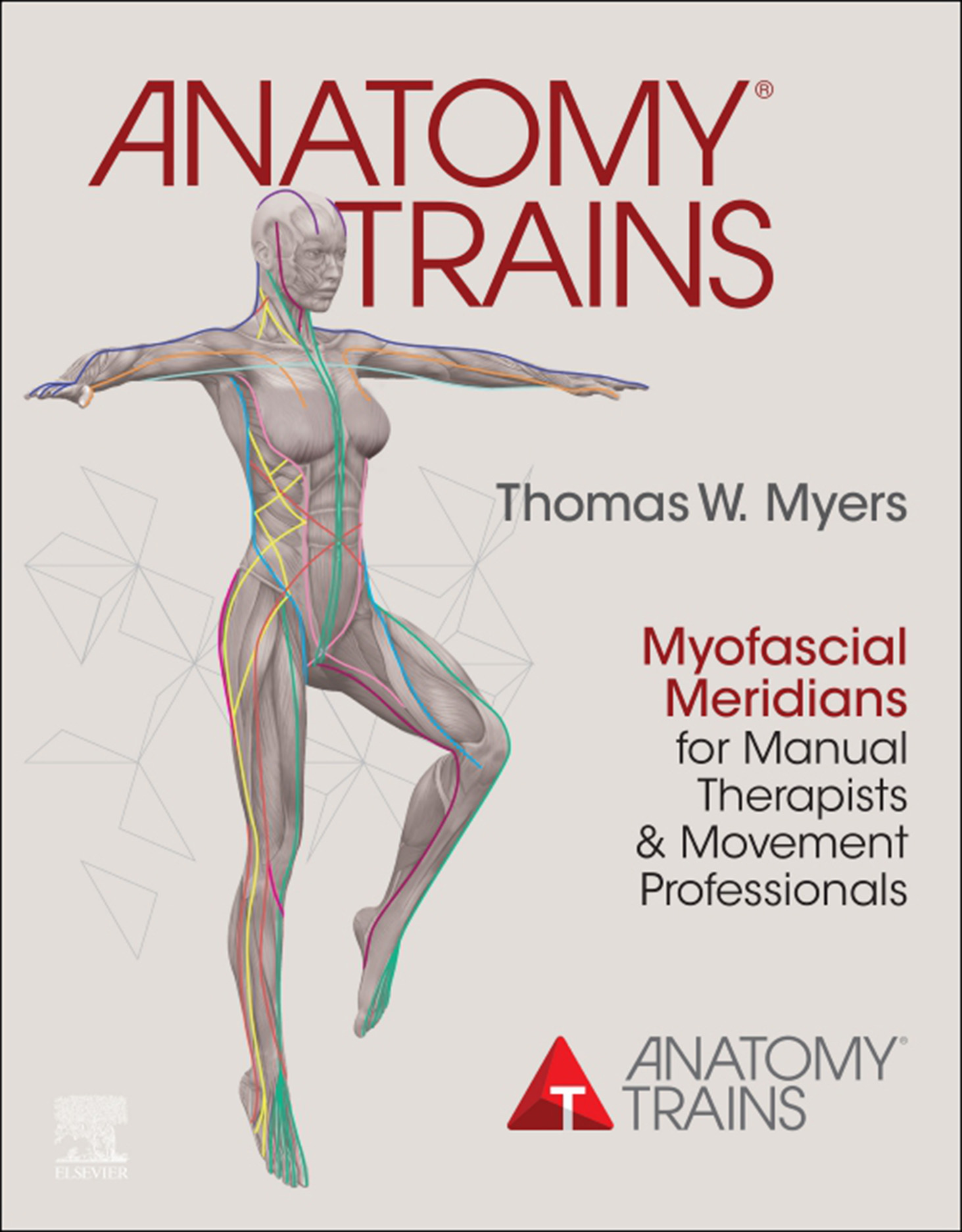Table of Contents
List of tables
- Tables in 3
- Tables in 4
- Tables in 5
- Tables in 6
- Tables in 7
- Tables in 8
- Tables in 9
- Tables in 10
- Tables in Appendix 1
List of figures
- Figures in 1
- Figures in 2
- Figures in 3
- Figures in 4
- Figures in 5
- Figures in 6
- Figures in 7
- Figures in 8
- Figures in 9
- Figures in 10
- Figures in 11
- Figures in Appendix 1
- Figures in Appendix 2
- Figures in Appendix 3
- Figures in Appendix 4
- Figures in Appendix 5
Landmarks
Anatomy Trains
Myofascial Meridians for Manual Therapists and Movement Professionals
Fourth Edition
Thomas W. Myers
Licensed Massage Therapist (LMT), Nationally Certified in Therapeutic Massage and Bodywork (NCTMB), Certified Rolfer (ARP), Practitioner and Lecturer, Director, Anatomy Trains LLC, Maine, USA

Table of Contents
Dedication
To Edward, for the gift of language.
To Julia, for the tenacity to see it through.
Every act of the body is an act of the soul.
( William Alfred )
I don't know anything, but I do know that everything is interesting
if you go into it deeply enough.
( Richard Feynman )
Alfred W. The Curse of an Aching Heart. Out of print.
Feynman R. Six Easy Pieces. New York: Addison Wesley; 1995.
Copyright
2021, Elsevier Limited. All rights reserved.
First edition 2001
Second edition 2009
Third edition 2014
The right of Thomas W. Myers to be identified as author of this work has been asserted by him in accordance with the Copyright, Designs and Patents Act 1988.
No part of this publication may be reproduced or transmitted in any form or by any means, electronic or mechanical, including photocopying, recording, or any information storage and retrieval system, without permission in writing from the publisher. Details on how to seek permission, further information about the Publisher's permissions policies and our arrangements with organizations such as the Copyright Clearance Center and the Copyright Licensing Agency, can be found at our website: www.elsevier.com/permissions.
This book and the individual contributions contained in it are protected under copyright by the Publisher (other than as may be noted herein).
V.S. Elbrnd and R.M. Schultz retain copyright of their original figures in .
Notices
Practitioners and researchers must always rely on their own experience and knowledge in evaluating and using any information, methods, compounds or experiments described herein. Because of rapid advances in the medical sciences, in particular, independent verification of diagnoses and drug dosages should be made. To the fullest extent of the law, no responsibility is assumed by Elsevier, authors, editors or contributors for any injury and/or damage to persons or property as a matter of products liability, negligence or otherwise, or from any use or operation of any methods, products, instructions, or ideas contained in the material herein.
ISBN: 9780702078132
Content Strategist: Lauren Willis
Content Development Specialist: Kim Benson
Project Managers: Anne Collett, Julie Taylor
Design: Brian Salisbury
Illustration Manager: Muthukumaran Thangaraj
Marketing Manager: Ed Major
Printed in China
Last digit is the print number:987654321

Preface
Since initial publication in 2001, the reach and application of the ideas in this book have far outstripped this author's expectations. We and our faculty have been invited to present these ideas and their application on every continent save Antarctica to a wide variety of professionals, including orthopedists, physiatrists, orofacial surgeons, physiotherapists, podiatrists, chiropractors, osteopaths, psychologists, athletic and personal trainers, performance coaches, midwives, yoga teachers, martial artists, massage therapists, dancers, musicians, and somatic educators of all stripes. The book is now available in 15 languages. A simple Google search of Anatomy Trains now yields over 13 million hits, as therapists and educators find useful applications beyond our original conception.
This fourth edition includes many small updates and corrections that arose out of our continuing teaching and practice, as well as preliminary evidence from fascial dissections and the few available studies in myofascial force transmission beyond muscles' origin and insertion. We have been able to include some recent discoveries made in the fascial and myofascial world since the third edition, as well as to fill in areas where our initial ignorance of the wider world has been rectified.
For ease of assimilation, the current understanding of fascia has been summarized in this edition as a substantial is heavily referenced for those who wish to delve more deeply beyond what we had space to include.
Additionally, we are very pleased to include in this edition an exploration of the myofascial continuities in the quadruped form specifically horses and dogs as developed by Danish veterinarians.
The that outlines our flagship protocol the Anatomy Trains 12-series of Structural Integration has been expanded to reflect our increasing experience with teaching this progression cross-culturally.
This edition benefits from updated and corrected artwork by Graeme Chambers, Debbie Maizels and Philip Wilson. We are also pleased to include some preliminary photographs from the nascent Fascial Net Plastination Project, which is using the techniques pioneered by Gunther von Hagens in BodyWorlds to produce images that convey the beauty, intricacy, and ubiquity of the fascial system. We look forward to further revealing images and models from this approach.
The book is designed to allow rapid comprehension of the relevant concepts for a casual reader, or a detailed analysis for the curious. Thumb through to get the overall concept. Follow the illustrations and read their captions to be led through the story at an easily graspable level. Delve into the text which is coded with icons for the varying interests of readers for the more complete story.
Like most textbooks these days, this edition makes increasing use of electronic media. The text is studded with website addresses for further study, and our own website, www.anatomytrains.com , is being constantly updated. There are also references to the dozens of video programs we have produced to support professional application of the Anatomy Trains concepts.
The eBook on the accompanying website (and app) www.expertconsult.com provides access to many hours of goodies not otherwise available in a book format, including video clips from our technique, dissection, and visual assessment video programs, computer graphic representations of the Anatomy Trains, webinars, extra client photos for visual assessment practice, and other incidental videos of interest.
Both the understanding of the role of fascia and the implications and applications of Anatomy Trains are developing rapidly. This new fourth edition, with its expanded connections to the web, ensures an up-to-date point of view on fascia, a largely missing element in movement study.


